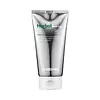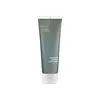What's inside
What's inside
 Key Ingredients
Key Ingredients

 Benefits
Benefits

 Concerns
Concerns

 Ingredients Side-by-side
Ingredients Side-by-side

Water
Skin ConditioningGlycerin
HumectantDipropylene Glycol
HumectantCamellia Sinensis Leaf Powder
ExfoliatingBentonite
AbsorbentCetyl Ethylhexanoate
EmollientPolysorbate 60
EmulsifyingArtemisia Caruifolia Powder
AbrasiveChamomilla Recutita Extract
Skin ConditioningPhragmites Communis Extract
Skin ConditioningPoria Cocos Extract
Skin ConditioningVitis Vinifera Callus Culture Extract
Nelumbo Nucifera Callus Culture Extract
AntimicrobialCamellia Sinensis Callus Culture Extract
PerfumingPanax Ginseng Callus Culture Extract
Skin ConditioningGlycyrrhiza Uralensis Root Extract
Skin ConditioningCimicifuga Dahurica Root Extract
AntioxidantPolygonum Multiflorum Root Extract
Skin ConditioningPhellinus Linteus Extract
Skin ConditioningAngelica Gigas Root Extract
Skin ConditioningMorus Alba Bark Extract
Skin ConditioningPaeonia Lactiflora Extract
AstringentSophora Angustifolia Root Extract
Skin ConditioningScutellaria Baicalensis Root Extract
AstringentCamellia Sinensis Leaf Extract
AntimicrobialCentella Asiatica Extract
CleansingChamomilla Recutita Flower Extract
MaskingGlycyrrhiza Glabra Root Extract
BleachingPolygonum Cuspidatum Root Extract
AntioxidantRosmarinus Officinalis Leaf Extract
AntimicrobialHamamelis Virginiana Leaf Extract
Skin ConditioningSalvia Officinalis Leaf Extract
CleansingMelaleuca Alternifolia Leaf Extract
PerfumingEucalyptus Globulus Leaf Extract
PerfumingSalix Alba Bark Extract
AstringentCalendula Officinalis Extract
Skin ConditioningBorago Officinalis Extract
EmollientJasminum Officinale Extract
MaskingLavandula Angustifolia Extract
Skin ConditioningMentha Arvensis Leaf Extract
MaskingRosmarinus Officinalis Extract
AntimicrobialMorus Alba Root Extract
BleachingThymus Vulgaris Extract
PerfumingHamamelis Virginiana Extract
AntiseborrhoeicGlycine Max Seed Extract
Skin ConditioningHouttuynia Cordata Extract
Skin ConditioningLycium Chinense Fruit Extract
AntioxidantPerilla Frutescens Leaf Extract
MaskingSesamum Indicum Seed Extract
Skin ConditioningAsiaticoside
AntioxidantAsiatic Acid
Skin ConditioningMadecassic Acid
Skin ConditioningCentella Asiatica Leaf Extract
Skin ConditioningArtemisia Annua Extract
MaskingTaraxacum Officinale Leaf Extract
Skin ConditioningCalendula Officinalis Flower Extract
MaskingGinkgo Biloba Leaf Extract
Skin ConditioningXanthan Gum
EmulsifyingChromium Oxide Greens
Allantoin
Skin ConditioningSodium Hyaluronate
HumectantAcetyl Hexapeptide-8
HumectantCopper Tripeptide-1
Skin ConditioningPalmitoyl Pentapeptide-4
Skin ConditioningTripeptide-1
Skin ConditioningPalmitoyl Tripeptide-1
Skin ConditioningHexapeptide-9
Skin ConditioningNonapeptide-1
Skin ConditioningPalmitoyl Tetrapeptide-7
Skin ConditioningAcetyl Octapeptide-3
HumectantMyristoyl Pentapeptide-17
Skin ConditioningSh-Oligopeptide-1
Skin ConditioningRh-Polypeptide-11
Skin ConditioningSorbitan Stearate
EmulsifyingStearic Acid
CleansingSodium Acrylate/Sodium Acryloyldimethyl Taurate Copolymer
Emulsion StabilisingIsohexadecane
EmollientPolysorbate 80
EmulsifyingEthylhexylglycerin
Skin ConditioningCaprylyl Glycol
EmollientHydrolyzed Sponge
Skin ConditioningChlorphenesin
AntimicrobialParfum
MaskingWater, Glycerin, Dipropylene Glycol, Camellia Sinensis Leaf Powder, Bentonite, Cetyl Ethylhexanoate, Polysorbate 60, Artemisia Caruifolia Powder, Chamomilla Recutita Extract, Phragmites Communis Extract, Poria Cocos Extract, Vitis Vinifera Callus Culture Extract, Nelumbo Nucifera Callus Culture Extract, Camellia Sinensis Callus Culture Extract, Panax Ginseng Callus Culture Extract, Glycyrrhiza Uralensis Root Extract, Cimicifuga Dahurica Root Extract, Polygonum Multiflorum Root Extract, Phellinus Linteus Extract, Angelica Gigas Root Extract, Morus Alba Bark Extract, Paeonia Lactiflora Extract, Sophora Angustifolia Root Extract, Scutellaria Baicalensis Root Extract, Camellia Sinensis Leaf Extract, Centella Asiatica Extract, Chamomilla Recutita Flower Extract, Glycyrrhiza Glabra Root Extract, Polygonum Cuspidatum Root Extract, Rosmarinus Officinalis Leaf Extract, Hamamelis Virginiana Leaf Extract, Salvia Officinalis Leaf Extract, Melaleuca Alternifolia Leaf Extract, Eucalyptus Globulus Leaf Extract, Salix Alba Bark Extract, Calendula Officinalis Extract, Borago Officinalis Extract, Jasminum Officinale Extract, Lavandula Angustifolia Extract, Mentha Arvensis Leaf Extract, Rosmarinus Officinalis Extract, Morus Alba Root Extract, Thymus Vulgaris Extract, Hamamelis Virginiana Extract, Glycine Max Seed Extract, Houttuynia Cordata Extract, Lycium Chinense Fruit Extract, Perilla Frutescens Leaf Extract, Sesamum Indicum Seed Extract, Asiaticoside, Asiatic Acid, Madecassic Acid, Centella Asiatica Leaf Extract, Artemisia Annua Extract, Taraxacum Officinale Leaf Extract, Calendula Officinalis Flower Extract, Ginkgo Biloba Leaf Extract, Xanthan Gum, Chromium Oxide Greens, Allantoin, Sodium Hyaluronate, Acetyl Hexapeptide-8, Copper Tripeptide-1, Palmitoyl Pentapeptide-4, Tripeptide-1, Palmitoyl Tripeptide-1, Hexapeptide-9, Nonapeptide-1, Palmitoyl Tetrapeptide-7, Acetyl Octapeptide-3, Myristoyl Pentapeptide-17, Sh-Oligopeptide-1, Rh-Polypeptide-11, Sorbitan Stearate, Stearic Acid, Sodium Acrylate/Sodium Acryloyldimethyl Taurate Copolymer, Isohexadecane, Polysorbate 80, Ethylhexylglycerin, Caprylyl Glycol, Hydrolyzed Sponge, Chlorphenesin, Parfum
Water
Skin ConditioningKaolin
AbrasiveGlycerin
HumectantDipropylene Glycol
HumectantBentonite
AbsorbentArtemisia Princeps Extract
Skin ConditioningStearic Acid
CleansingPanthenol
Skin Conditioning1,2-Hexanediol
Skin ConditioningIllite
AbrasiveArtemisia Montana Leaf Powder
ExfoliatingCamellia Sinensis Leaf Water
MaskingCastanea Crenata Shell Extract
Skin ConditioningOriganum Vulgare Leaf Extract
Skin ConditioningChamaecyparis Obtusa Leaf Extract
Skin ConditioningSalix Alba Bark Extract
AstringentAvena Sativa Kernel Extract
AbrasiveCynara Scolymus Leaf Extract
Skin ConditioningLactobacillus/Soybean Ferment Extract
Skin ConditioningPortulaca Oleracea Extract
Skin ConditioningCinnamomum Cassia Bark Extract
MaskingScutellaria Baicalensis Root Extract
AstringentMontmorillonite
AbsorbentCalcite
Skin ConditioningPhaseolus Angularis Seed Powder
Canadian Colloidal Clay
Skin ConditioningHydrogenated Lecithin
EmulsifyingBeta-Glucan
Skin ConditioningMethylpropanediol
SolventAlgin
MaskingMagnesium Aluminum Silicate
AbsorbentCetyl Alcohol
EmollientButylene Glycol
HumectantXanthan Gum
EmulsifyingAllantoin
Skin ConditioningTromethamine
BufferingPolyquaternium-51
Skin ConditioningEthylhexylglycerin
Skin ConditioningWater, Kaolin, Glycerin, Dipropylene Glycol, Bentonite, Artemisia Princeps Extract, Stearic Acid, Panthenol, 1,2-Hexanediol, Illite, Artemisia Montana Leaf Powder, Camellia Sinensis Leaf Water, Castanea Crenata Shell Extract, Origanum Vulgare Leaf Extract, Chamaecyparis Obtusa Leaf Extract, Salix Alba Bark Extract, Avena Sativa Kernel Extract, Cynara Scolymus Leaf Extract, Lactobacillus/Soybean Ferment Extract, Portulaca Oleracea Extract, Cinnamomum Cassia Bark Extract, Scutellaria Baicalensis Root Extract, Montmorillonite, Calcite, Phaseolus Angularis Seed Powder, Canadian Colloidal Clay, Hydrogenated Lecithin, Beta-Glucan, Methylpropanediol, Algin, Magnesium Aluminum Silicate, Cetyl Alcohol, Butylene Glycol, Xanthan Gum, Allantoin, Tromethamine, Polyquaternium-51, Ethylhexylglycerin
 Reviews
Reviews

Ingredients Explained
These ingredients are found in both products.
Ingredients higher up in an ingredient list are typically present in a larger amount.
Allantoin is a soothing ingredient known for its protective and moisturizingg properties. Because of this, it is often added to products with strong active ingredients.
Studies show higher concentrations of this ingredient can promote wound healing.
Though it can be derived from the comfrey plant, allantoin is produced synthetically for cosmetic products to ensure purity.
Learn more about AllantoinBentonite is an aluminium phyllosilicate clay with great absorbent properties. The name 'bentonite' comes from the area where the largest source is found: Fort Benton, Wyoming.
As a clay, bentonite is often used to absorb excess oil and provide exfoliation. It has also been shown to have some antibacterial and anti-inflammatory properties. Studies show bentonite was effective at calming dermatitis from poison ivy and in diaper dermatitis of infants. Bentonite has also been shown to act as a barrier against toxic compounds on your skin.
Sunscreens containing bentonite display higher water resistance and stay on the skin for much longer. The sunscreens containing bentonite also show higher potency and UV light absorbtion.
Bentonite is naturally created from volcanic ash and several natural weathering/hydrothermal processes.
A common usage of bentonite is removing excess protein from white wines. Bentonite contains a property of being able to absorb large amounts of protein from aqueous solutions.
Phyllosilicate clay has a structure formed by sheets.
Learn more about BentoniteDipropylene Glycol is a synthetically created humectant, stabilizer, and solvent.
This ingredient helps:
Dipropylene glycol is technically an alcohol, but it belongs to the glycol family (often considered part of the ‘good’ alcohols). This means it is hydrating and gentle on skin unlike drying solvent alcohols like denatured alcohol.
As a masking agent, Dipropylene Glycol can be used to cover the smell of other ingredients. However, it does not have a scent.
Studies show Dipropylene Glycol is considered safe to use in skincare.
Learn more about Dipropylene GlycolEthylhexylglycerin (we can't pronounce this either) is commonly used as a preservative and skin softener. It is derived from glyceryl.
You might see Ethylhexylglycerin often paired with other preservatives such as phenoxyethanol. Ethylhexylglycerin has been found to increase the effectiveness of these other preservatives.
Glycerin is already naturally found in your skin. It helps moisturize and protect your skin.
A study from 2016 found glycerin to be more effective as a humectant than AHAs and hyaluronic acid.
As a humectant, it helps the skin stay hydrated by pulling moisture to your skin. The low molecular weight of glycerin allows it to pull moisture into the deeper layers of your skin.
Hydrated skin improves your skin barrier; Your skin barrier helps protect against irritants and bacteria.
Glycerin has also been found to have antimicrobial and antiviral properties. Due to these properties, glycerin is often used in wound and burn treatments.
In cosmetics, glycerin is usually derived from plants such as soybean or palm. However, it can also be sourced from animals, such as tallow or animal fat.
This ingredient is organic, colorless, odorless, and non-toxic.
Glycerin is the name for this ingredient in American English. British English uses Glycerol/Glycerine.
Learn more about GlycerinSalix Alba Bark Extract comes from the white willow tree, which is native to Europe and Central Asia.
Salix Alba Bark Extract has often been described as salicylic acid's cousin. This is due to the salicin it contains. However, studies are limited showing salix alba bark to be an effective salicylic acid alternative.
Salicin does have anti-inflammatory and antioxidant properties. It has shown to decrease the formation of inflammatory mediators, such as tumor necrosis factor-α and nuclear factor-kappa B. Salicin also has a mildly exfoliating effect on the skin.
Several other components in salix alba bark extract also contain antioxidant properties, such as flavonoids and polyphenols. Antioxidants may help with anti-aging as they neutralize harmful free-radical molecules.
Willow Bark extract has been used for thousands of years. Ancient civilizations used white willow to help treat pain and fevers.
Learn more about Salix Alba Bark ExtractScutellaria Baicalensis Root Extract comes from the Baikal skullcap or Chinese skullcap plant. This plant is native to Northeast Asia and can be found in China, Mongolia, Korea, and Siberia.
In cosmetics, Scutellaria Baicalensis Root Extract provides antioxidant and anti-inflammatory benefits. This is due to the flavonoid composition of Scutellaria Baicalensis Root Extract.
In Chinese traditional folk medicine, Scutellaria Baicalensis Root Extract is used to help treat lung issues and hypertension.
Learn more about Scutellaria Baicalensis Root ExtractStearic Acid is a fatty acid. It is an emollient, emulsifier, and texture enhancer.
As an emollient, stearic acid helps soften skin. It aids the skin's protective barrier by preventing water loss. It also provides a gentle cleansing effect without stripping away natural oils.
Stearic acid may also be used to enhance the texture of products. It can add volume and stabilize ingredients such as water and oil. This can help water and oil ingredients from separating.
Sources of stearic acid include animal or vegetable fats/oils such as coconut or shea. It can be naturally found in butter, cocoa butter, shea butter, vegetable fats, and animal tallow.
This ingredient may not be Malassezia folliculitis, or fungal-acne safe.
Learn more about Stearic AcidWater. It's the most common cosmetic ingredient of all. You'll usually see it at the top of ingredient lists, meaning that it makes up the largest part of the product.
So why is it so popular? Water most often acts as a solvent - this means that it helps dissolve other ingredients into the formulation.
You'll also recognize water as that liquid we all need to stay alive. If you see this, drink a glass of water. Stay hydrated!
Learn more about WaterXanthan gum is used as a stabilizer and thickener within cosmetic products. It helps give products a sticky, thick feeling - preventing them from being too runny.
On the technical side of things, xanthan gum is a polysaccharide - a combination consisting of multiple sugar molecules bonded together.
Xanthan gum is a pretty common and great ingredient. It is a natural, non-toxic, non-irritating ingredient that is also commonly used in food products.
Learn more about Xanthan Gum